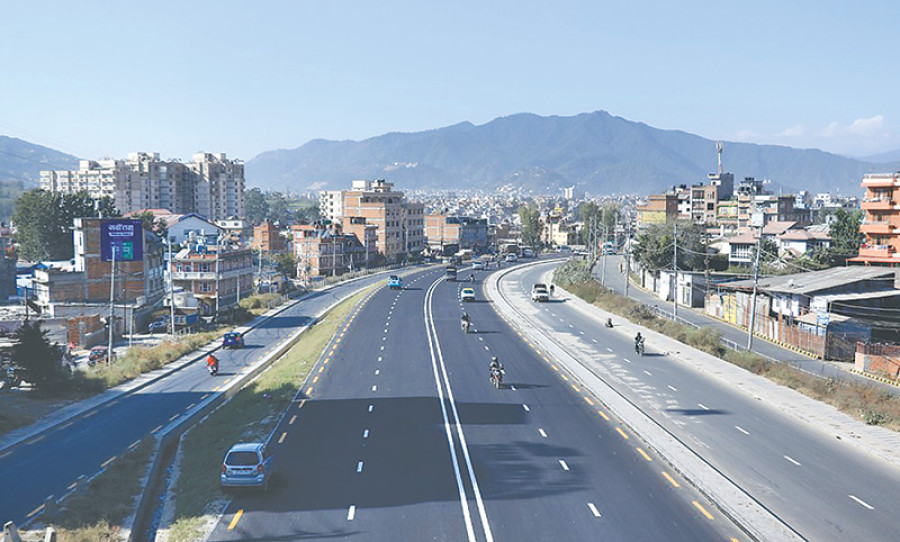Valley
Kalanki-Koteshwor becomes ‘killer road’, recording 658 accidents in 10 months
Metropolitan Traffic Police Range data shows 25 people have died and 454 others have been critically injured in the road stretch
Anup Ojha
On Sunday, a speeding Scorpio hit journalist Gobinda Prasad Sharma, who was commuting on a bike, at Dhobighat. The collision killed Sharma, and pillion rider Chandramani Mudbari, while undergoing treatment at the Norvic Hospital. According to traffic police, two speeding SUVs collided first, the Scorpio then collided with a car and hit the motorcycle, killing the two.
Sharma, a resident of Godawari, was the founding chairperson of the Jawalakhel-based Agriculture Television, while Mudari was from Kumari-3, Nuwakot.
The incident took place on the 10.5 km road from Kalanki to Koteshwor.
After the incident gathered attention on both media platforms and the public sphere across Kathmandu Valley, with some calling the road section a ‘death trap’, the Metropolitan Traffic Police Division on Monday came up with a drive introducing laser speed guns to keep a check on speeding vehicles.
The division said it will operate three laser speed guns, which can track speeding vehicles up to 150 metres away. The device can also take a picture of a speeding vehicle and print it immediately.
In November last year, Samran Maharjan, a 20-year-old college student who was riding home to Swayambhu from Satdobato, too was hit by car at Mahalaxmisthan. Data from the Metropolitan Traffic Police Range Lalitpur shows from a total of 658 accidents, 25 people have died and 454 others were critically injured in the 10 months of the current fiscal year.
“Sunday’s accident was the most terrible one yet,” said Inspector Rajesh Silwal, who has been the chief of Lalitpur Range for the past three months.
“We have not been able to find a way to minimise accidents because the infrastructure itself is faulty and highly dangerous. Even our staff fear managing traffic in the road section,” said Silwal.
SSP Basant Kumar Panta, chief of the Metropolitan Traffic Police Division, said the introduction of this new system will have ‘psychological impact’ on riders and drivers. Authorities have set a speed limit of 50km per hour on the main road and 20km per hour along the service lane. If the riders or drivers are found to have breached the rule, they will be liable to fines ranging from Rs 500 to Rs 1,500 as per the Transport Management Act.
However, commuters have criticised the new rule. “Limiting a ride to 50 km and 20km per hour is illogical on an expressway,” said Bhaskar KC, an IT officer who lives in Imadol.
Urban planners, cyclists and commuters have been saying that the road is unsafe for everyone—pedestrians, riders, and cyclists. It lacks enough zebra crossings, traffic lights, street lamps, designated parking, median, designated U-turn and space for cyclists and pedestrians.
The Kalanki-Koteshwor stretch was rebuilt by the Chinese government. The Shanghai Construction took five years to complete the first section of the China-funded project that began in June 2013. The project cost Rs5.13 billion.
“It has been more than a year since the road came into operation, and basic infrastructure is still lacking,” said Inspector Silwal. “We are doing our best to control the increasing number of accidents.”
In an effort to create awareness to minimise accidents, the Traffic Division conducted a weeklong traffic awareness drive in February.
The Department of Roads also launched a road safety audit in February, but no concrete action has been taken to immediately correct the faulty infrastructure on the road.




 10.12°C Kathmandu
10.12°C Kathmandu.jpg)











